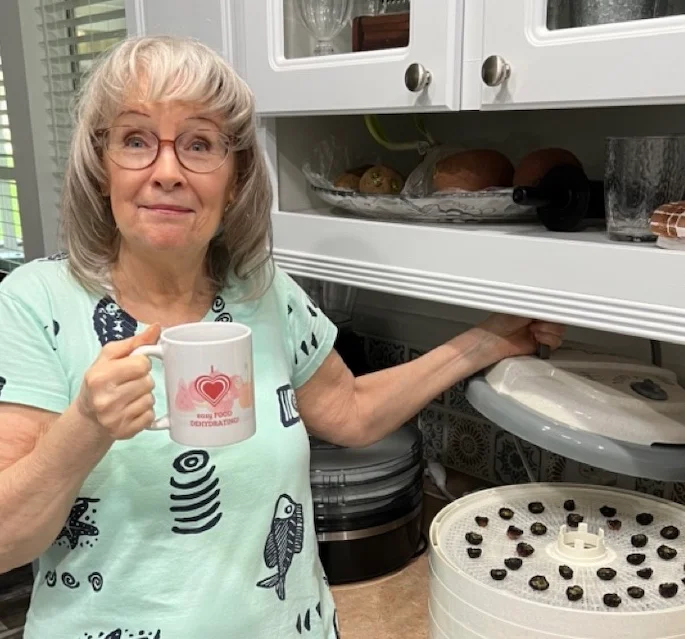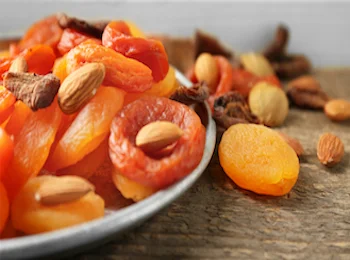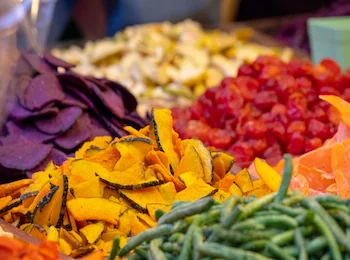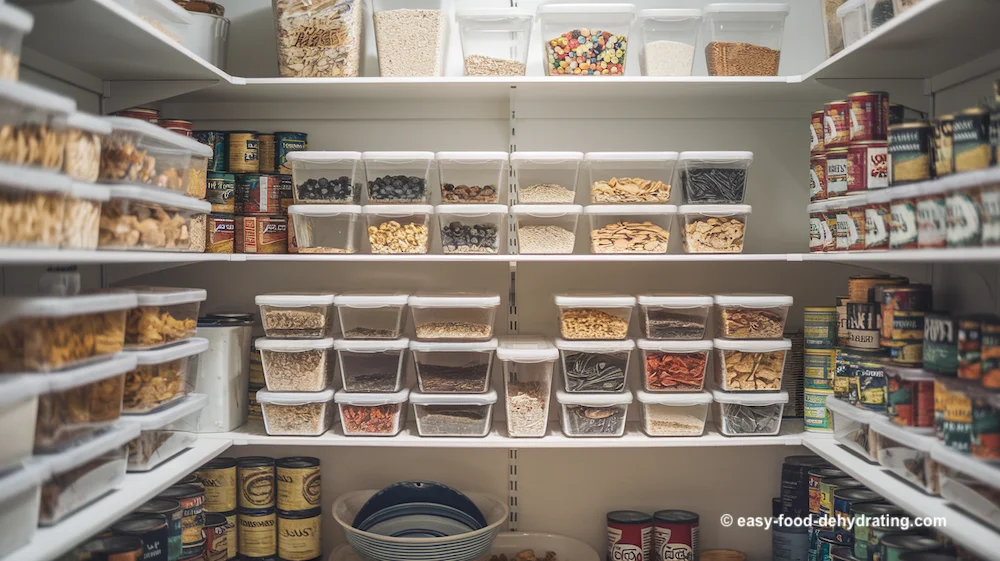What We Mean by “Dehydrate”
Here at Easy Food Dehydrating, “dehydrate” always means using an electric food dehydrator — the easy, reliable way to dry food at home.
- Home
- What Is Food Dehydrating
What Is Food Dehydrating?

Food dehydrating is one of the oldest — and easiest — ways to preserve food naturally. By slowly removing moisture from fruits, vegetables, meats, and herbs, you can store them for months (or even years!) without spoilage.
✅ Quick Answer: What Is Food Dehydrating?
Food dehydrating is the process of removing moisture from food to preserve it. This slows down spoilage, reduces weight, and extends shelf life — all without the need for added preservatives or refrigeration.
 Getting started with food dehydrating at home is simple — and yes, that’s my Nesco dehydrator in action!
Getting started with food dehydrating at home is simple — and yes, that’s my Nesco dehydrator in action!Whether you're prepping for long-term food storage, backpacking meals, or healthy homemade snacks, food dehydration is a simple method that anyone can learn at home — and I’ll show you how!
How Does Food Dehydrating Work?
Dehydrating works by gradually removing moisture from food at low temperatures. Since bacteria, mold, and yeast need water to grow, removing moisture prevents spoilage and keeps food shelf-stable.
Most foods are dried at around 125°F–135°F using a food dehydrator, but ovens, air-drying, and sun-drying are also valid methods (especially for herbs and some fruits). With proper technique and airtight storage, dehydrated food can last months — or even years.
💡 Tip: Outside the U.S.? Most dehydrating temps here are listed in Fahrenheit - use our quick converter to see the Celsius equivalent for your machine.

What Can You Dehydrate at Home?
Almost anything! Here are some common foods you can easily dehydrate at home:
- Fruits: Apples, bananas, mangoes, peaches, strawberries, pineapple
- Vegetables: Carrots, bell peppers, tomatoes, zucchini, onions
- Meats: Beef jerky, chicken jerky, turkey slices
- Herbs: Basil, oregano, thyme, parsley, rosemary
- Grains and legumes (after cooking): Rice, pasta, lentils, beans
- Even full meals! (Once you're more experienced)
If you're new to dehydrating, start with fruits like apple slices or banana chips. They’re forgiving and delicious!
Benefits of Dehydrating Your Own Food
Dehydrating your own food has some seriously practical perks. First, it saves you money — especially when you buy produce in bulk, take advantage of sales, or preserve extra from your garden. It’s also a great way to cut down on food waste by drying fruits and veggies before they spoil.
Storage becomes a breeze, too. Dehydrated foods take up far less space than canned or frozen items and don’t require electricity to stay preserved, making them perfect for emergency kits, camping, or just freeing up freezer space.
You also get full control over what goes into your food — no added preservatives, artificial colors, or hidden sugars. And let’s not forget the convenience: lightweight, portable snacks like banana chips or beef jerky are great for lunchboxes, hikes, or road trips.
Once you get the hang of it, food dehydrating becomes a habit that pays off again and again.
Do You Need a Dehydrator to Start?
Nope! While a dedicated dehydrator offers better airflow and efficiency, you can get started using:
- A conventional oven (lowest temp + propped-open door)
- A warm sunny spot for herbs (with a mesh screen)
- Or even air-drying indoors for certain foods like chili peppers
But if you love it (and I think you will), a good dehydrator like the Nesco FD-75A, an Excalibur, or an Elite Gourmet is worth the investment — and I review those here on Easy Food Dehydrating!
Is Dehydrated Food Healthy?
Yes — dehydrated foods are surprisingly nutritious! They retain most of their original nutrients, especially fiber and important minerals. While some heat-sensitive vitamins like A and C may decrease slightly during the drying process, the overall nutritional value remains strong — and the extended shelf life is a worthwhile tradeoff.
To get the best results, try to slice your foods evenly so they dry consistently, and be sure to store them in cool, dark places using airtight containers.
For long-term storage, use oxygen absorbers and desiccant packets when vacuum sealing because they help preserve both freshness and nutrients.
Whether you're focused on clean eating or building an emergency stash, dehydrated foods are a smart and healthy addition to your pantry.
Next Steps: Try It for Yourself!
Dehydrating food isn’t just for preppers or health nuts — it’s for everyday folks like us who want to eat well, save money, and reduce waste.
Want a simple way to get started?
Download my free guide, 6 Simple Steps to Safe Food Dehydrating. It’s ideal for beginners, covering everything from slicing tips to safe storage methods. No spam, just help.
👉 And don’t forget — the top navigation has more beginner-friendly guides to help you along the way!
Or Jump Right Into the How-To Guides
Feeling ready to dive in? If you're more of a “hands-on” learner, you can skip the reading and get straight to the drying.
- How to Dehydrate Fruits – Learn how to dry apples, bananas, pineapple, and more
- How to Dehydrate Vegetables – From carrots to zucchini, we’ve got you covered
- How to Dehydrate Meats – Tips for safe and tasty dried meats
- How to Dehydrate Seafood – Safely dry shrimp, tuna, and salmon for long-term storage
- How to Dehydrate Eggs – Step-by-step methods to preserve eggs safely at home
Each guide includes step-by-step instructions, slicing tips, and storage advice.
✅ Ready? Let’s start your dehydrating journey with something simple - try fruit first!
→ How to Dehydrate Fruit hub page
Frequently Asked Questions About Food Dehydrating
How long does dehydrated food last?
How long does dehydrated food last?
It depends on the food and how it’s stored. Most dehydrated foods last 6–12 months in airtight containers, but with vacuum sealing and cool storage, they can last years.
Can I use my regular oven to dehydrate food?
Can I use my regular oven to dehydrate food?
Yes! Set your oven to the lowest temperature (around 170°F), place food on a wire rack or baking sheet, and leave the door propped open slightly for air circulation.
What’s are the differences between dehydrating and freeze-drying?
What’s are the differences between dehydrating and freeze-drying?
Dehydrating removes most of the water using heat. Freeze-drying removes nearly all water by freezing and sublimating. Freeze-dried foods last longer and are lighter, but the process requires expensive equipment.















